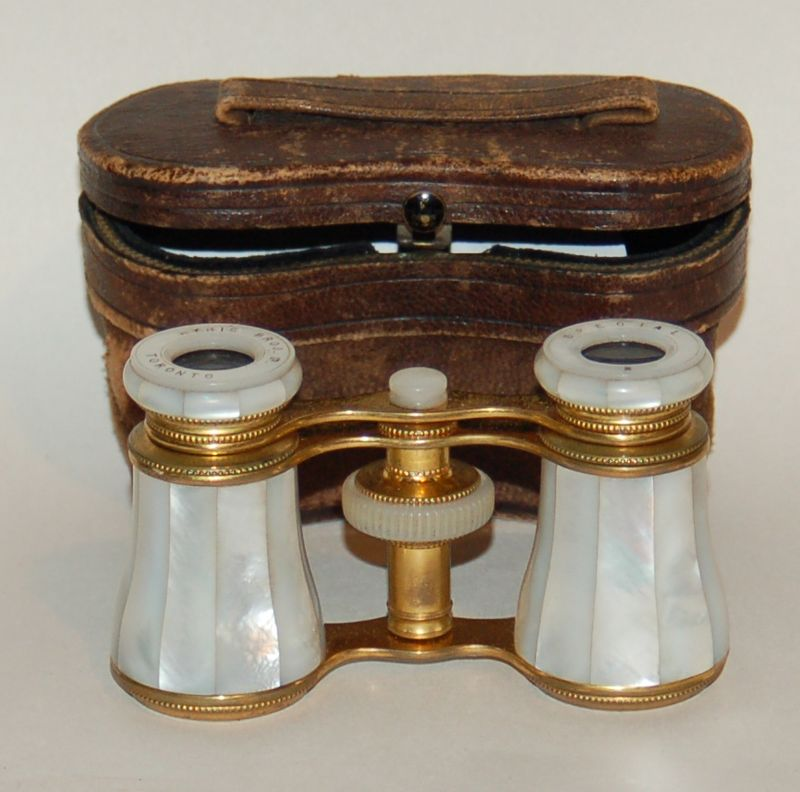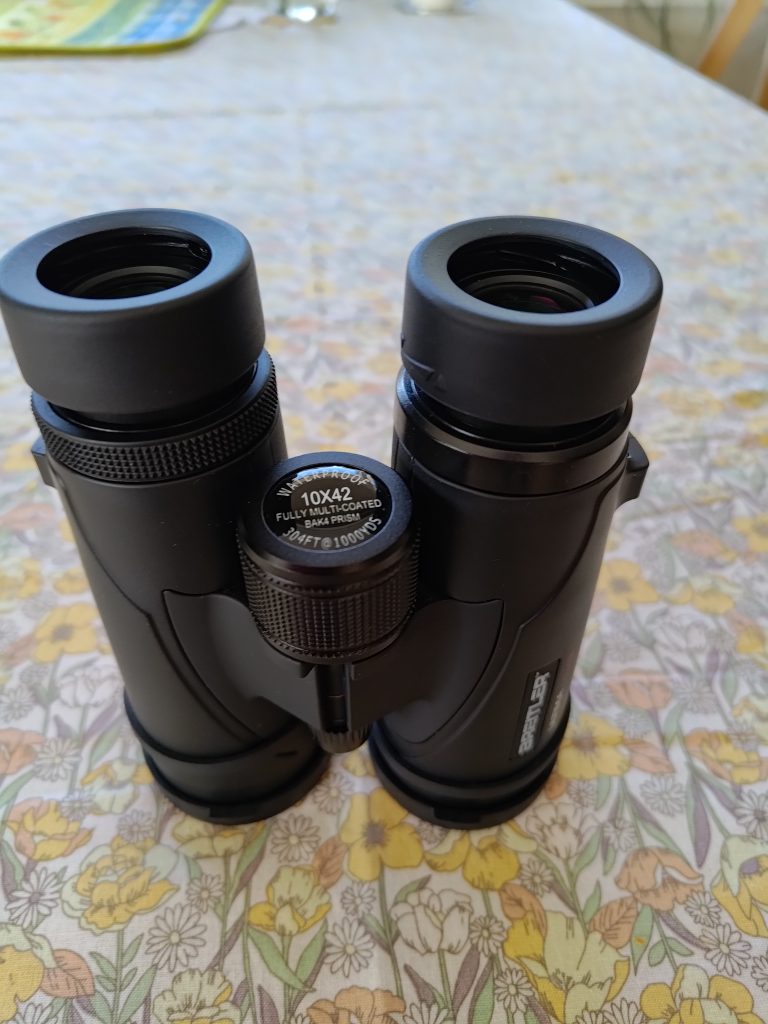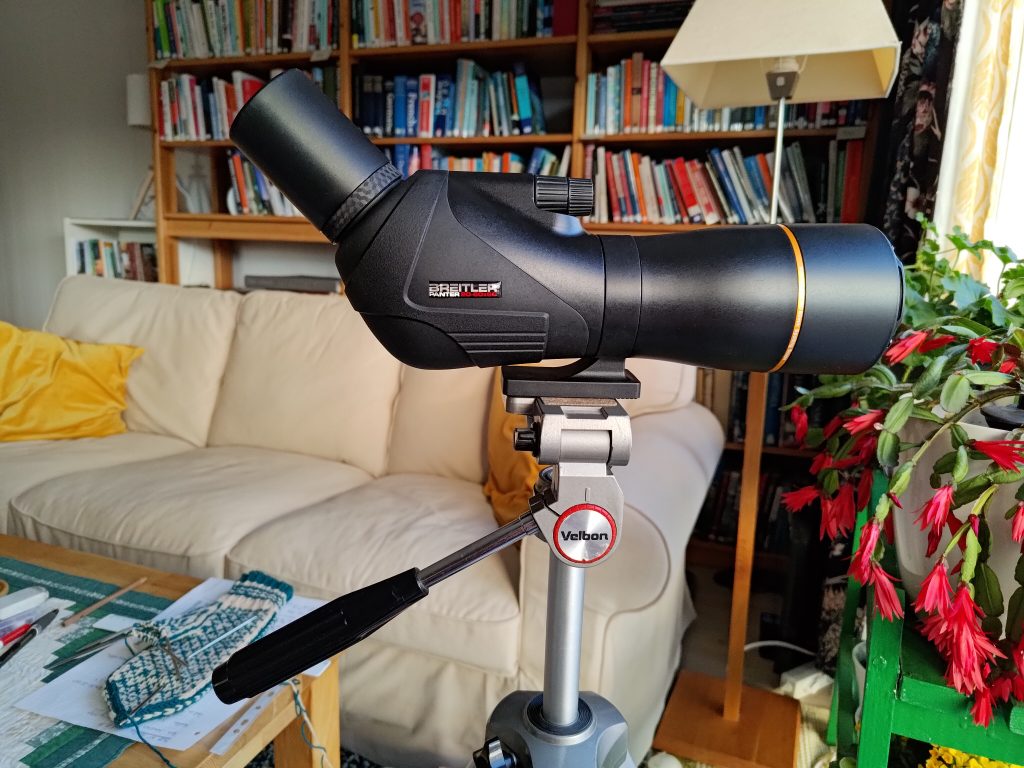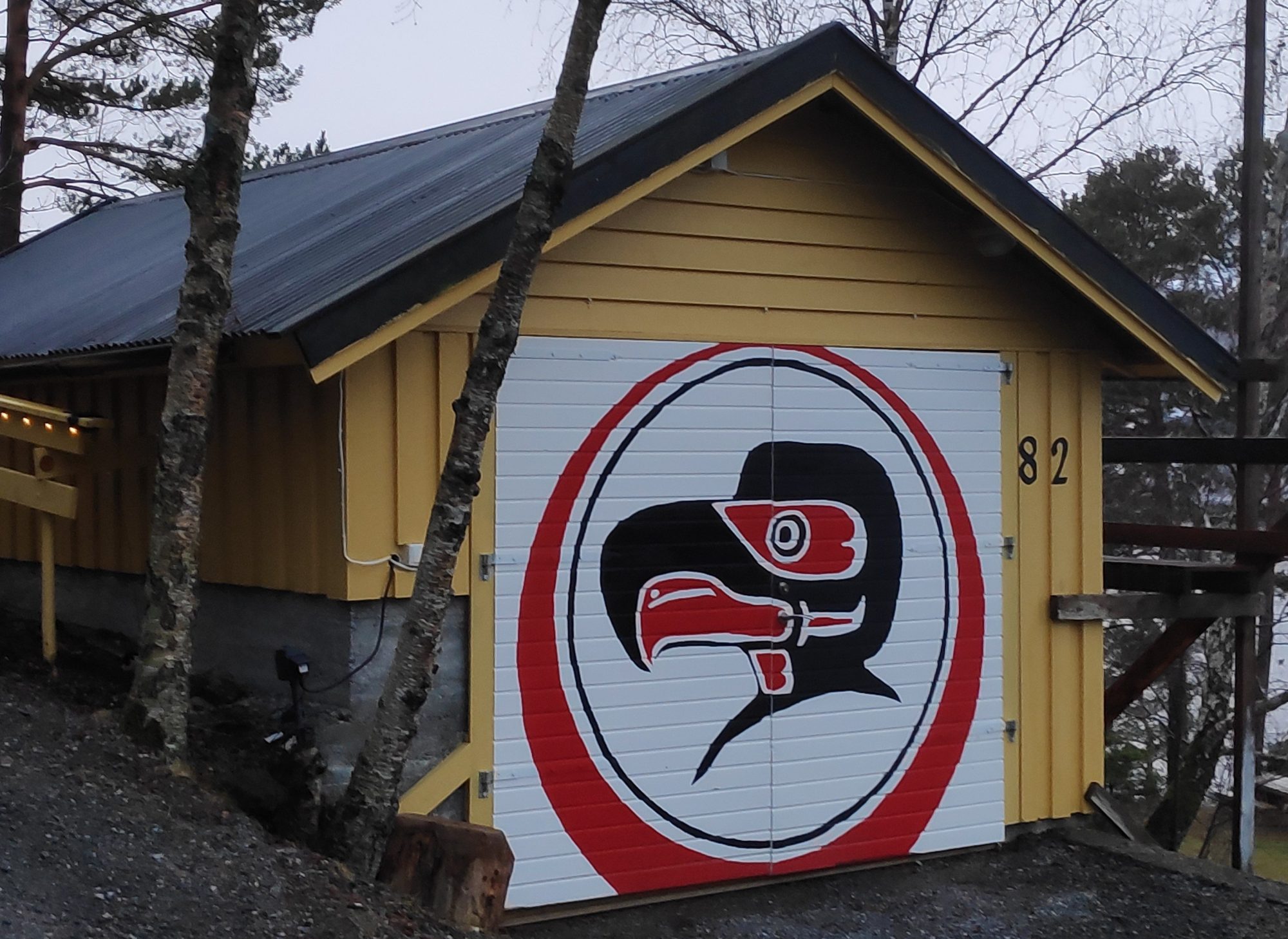
This weblog post is the seventh of a series about optics and optical equipment. This post is about binoculars, but also includes opera glasses, monoculars and spotting scopes. Future posts: # 8 is about astronomical telescopes; and, #9 is about microscopes. Later in 2025, two additional posts will appear: #10 is about digital cameras; #11 is about digital photograph collections.
Binoculars specification values include information about strength (magnification power) and size (objective lens diameter). These are typically designated with two numbers, such as 8×40, where 8 is the magnification power while 40 is the diameter (in millimeters) of the objective lenses = the lenses closest to the object being viewed. Objective lens size tells: 1) how big physically the binoculars are, and 2) how much light they can gather. These numbers fail to provide information about the quality of the optics or other features such as: rubber protective covering, waterproofing and fog-proofing or – often importantly – type of prism and type of glass.
Binoculars provide users with a three-dimensional image because each eyepiece presents a slightly different image to each eye and this parallax = displacement = difference in the apparent position, allows a viewer’s visual cortex to generate an impression of depth. Monoculars are unable to achieve this.
Most early binoculars used Galilean optics = a convex objective and a concave eyepiece lens. It presented an erect image but with a narrow field of view and low magnification. This construction is still used in cheap models and opera glasses. Aprismatic binoculars with Keplerian optics = twin telescopes, provides each tube with relay lenses to erect the image. Relay lenses are found in refracting telescopes, endoscopes and periscopes to extend system length. This is done before the eyepieces, which is used to invert an image.
An endoscope = an inspection instrument composed of image sensor, optical lens, light source and mechanical device, which is used to look deep into the body by way of openings such as the mouth or anus. A periscope = an instrument for observation over, around or through an object, obstacle or condition that prevents direct line-of-sight observation from an observer’s current position. In its simplest form, it consists of an outer case with mirrors at each end set parallel to each other at a 45° angle.
In optics, an erect image is one that appears right-side up. An image is formed when rays from a point on the original object meet again after passing through an optical system. The opposite of an erect image is an inverted image.
When lenses are part of a computing device, there is no need to transform images to form an erect image. This can be done efficiently by a graphics processor inside the device, before the image is shown on a screen.
Classification of binoculars and related optical instruments
Indoor vs outdoor: Opera glasses are designed to bring clarity to indoor/ theatrical experiences, while most of the other instruments, including binoculars, are designed to bring clarity to outdoor experiences.
Size of objective lenses: Binoculars are categorized into compact, midsize and full-size models, based on the size of their objective lenses. Variations in optics, design and construction can mean that models with the same size objective lenses will differ in bulk and weight. Some binoculars are bulky so that they will float.
Bulk: Lightweight compact models make sense for hiking. Midsize models with larger objectives, are bulkier, but provide brighter images and can be more comfortable to hold for long periods. Full-size binoculars can be useful in low-light conditions, but are heavier, and less comfortable, without a tripod.
In comparing lenses it is often useful to compare the area occupied by the objective lens, not its diameter. Thus, Area = π · r2 where π = 3.14 and r = 20 mm for a 40 mm diameter lens. This gives an area of 1256 mm2. but r = 40 mm for an 80 mm diameter lens, gives an area of 5024 mm2 which is 4 times as much.
In an article about binoculars for old people, it was suggested that consideration should be given to three features that younger people may be able to ignore. First, use light weight binoculars, substituting a roof prism, for a Porro prism; second, to maximize eye relief, buy binoculars that have an increased distance between the eye and the eyepiece to see the full image; third, decrease magnification from 10× to 8× or even 6×.
Prisms
Isaac Newton (1642 – 1727) used a prism is to disperse white light into component parts. Dispersion is of limited interest when it comes to using prisms in the real world. There is no perfect prism, but two have become standard in binoculars. The Porro prism is named after Italian Ignazio Porro (1801-1875) who invented it ca. 1850. The roof prism is a later invention.
Since the 1960s, handheld binoculars with roof prism-based reversing systems have become increasingly popular. Yet, these prisms are also problematic. Their use has led to a loss of image resolution, which turned out to be the consequence of unwanted interference: the total reflection occurring in the prisms causes a partial polarization of the beam. This beam is then split at the roof edge, with the two half-beams being reflected in different directions. After all the partial beams have been combined, however, their polarization vectors point in different directions, which corresponds to a phase shift and leads to a loss of resolution via the interference effects mentioned above. This phase shift occurs in perfectly manufactured prisms!
Binoculars with roof prisms are more compact and streamlined, lighter weight, and much easier to carry around than binoculars with Porro prisms. Roof prisms are more complex because there is no easy horizontal offset. Roof prisms take advantage of intricate and convoluted machined paths that reflect the light from the objective to ocular lenses. In 2025, people should choose roof prism binoculars, if they can afford it.
Usage:
Binoculars for backpacking and hiking should be small and light weight. Suitable models are often referred to as compact binoculars, with magnification of 8 or 10, and an objective lens diameter less than about 28 mm. Rubber coating, water resistant or waterproof will be appreciated.
Binoculars for wildlife viewing also include those used on safaris and for whale watching. They use a higher magnification (10 rather than 8) if one is likely to be located far away from the animals. Midsize (32mm) is preferred rather than full-size (42mm) if one wants something more compact. Water resistance is useful, but waterproof models are preferred for whale watching (or any other watching) from a boat.
Birding is a sub-genre of wildlife watching. Many birders are less concerned about size and weight, preferring midsize or full-size models such as 8×32 or 8×42. A 10-power magnification will have a narrower field of view compared to an 8 power pair. A wide field of view is useful for locating birds, and other wildlife that is moving. Water resistance is also a good feature, as are those that limit fogging when they go from a warm vehicle to cooler outside environments.
Binoculars on boats should have a low magnification (8 or less) because boat movements can make steady viewing challenging. Waterproof models are useful. 8×32 is a popular size.
For stargazing, one should maximize magnification and light gathering capabilities by choosing full-size binoculars: preferably, 10×50. With higher magnification, a tripod will be necessary. Telescopes for astronomy will be discussed in Optics 8.
Opera glasses = theater binoculars = Galilean binoculars, are compact, low-power optical magnification devices, usually used at indoor performances. Magnification power below 5× is usually desired to minimize image shake and maintain a large enough field of view. A magnification of 3× is preferred. The design of many modern opera glasses of the ornamental variety is based on the popular lorgnettes of the 19th century. Often, modern variants are equipped with an LED flashlight, allegedly to help people find their place in the dark.
Binoculars at Cliff Cottage
Our oldest optics are opera glasses previously owned by Trish’s maternal grandmother, made by (or at least labeled by) G. E. Trorey, in Vancouver. The Trorey jewellry company was started in 1893, and is famous for building what later was called the Birks clock. It was made to celebrate Trorey’s fifth anniversary. Birks bought Trorey in 1906. So, these opera glasses date from before then.
In the early 1980s we purchased a pair of Tento BPC 7 x 50 binoculars, in Molde, Norway. Tento = Technointorg = the Russian Ministry/ Office of Foreign Trade selling Russian optics outside the Soviet Union. БПЦ = BCP = бинокли призменные с центральной фокусировкой = binokli prizmienne s centralnoj fokusirowkoj = binoculars with central focusing. These were most likely made by Загорский оптико-механический завод = ZOMZ = Zagorsk Optical-Mechanical Plant, in Sergiyew Posad, 70 km north-east of Moscow.
On 2024-04-18, we decided that we needed better optical equipment. Yes, age may have been part of that decision. Since we have a optician in Inderøy, we decided to patronize them and buy a Breitler Ultima 10 x 42 binoculars. Specifications are provided below:
| Brand/ model: | Breitler Ultima |
| Objective diameter (mm): | 42 |
| Magnification (x): | 10 |
| Field of view at 1000m (m): | 101 |
| Near limit focus (m): | 2 |
| Exit pupil: | 4.2 mm |
| Glass | Bak-4 |
| Prism type | roof |
| Features: | Waterproof, Nitrogen filled , Protective covering |
| Product type: | Binoculars |
| Diameter front lense (mm): | 42 |
| Dimensions (L x W x H, mm) | 147 × 129 × 63 |
| Mass: (g) | 670 |

Monocular vs Spotting Scope
Monocular scopes share most features with spotting scopes, but in a smaller size and with less power and capabilities. For instance: Head: It provides support for the eye piece and connects it to the objective lens. Nose piece: A rotatable component that holds and selects the active objective lens. Eye piece = ocular lens = the lens nearest to the eye which you look through to observe objects. Objective lens: They are usually 2 or 3 lenses, with a prism in the middle that folds the optical path and extends the entire optical system length for an erect image. Arm: supports the head and connects it to the base. Focusing ring: is located around the body in some monocular scopes. Some use a focusing lever or slider button instead. Zoom is optional on monocular scopes. Those that have them have a magnification that varies from 4× to 12×, with 8× considered standard.
Most spotting scopes allow the user to alternate between fixed length and zoom magnification. Zooming allows users to find objects at low magnification, and then to narrow the field of view and magnify the object to observe the details. A variation from 20× to 60× is common.
Spotting scope characteristics. Eye cup: A small and twist-up shield for the eye. Eye cap: A flexible rubber shield that protects a user’s peripheral vision against light, wind and dust, prevents glare caused by ambient light on the ocular lens, and limits distractions. It is also known as eye shield. You can extend or contract it to use it with glasses, or without. Ocular and objective lens caps: These are rubber coverings that protect the lenses from damage from water, dirt and impact during transit or in storage. Some of them can be flipped up. Focusing ring: You twist it to the right or left to adjust the focus for a clear picture. Some models have focus knobs instead of focus rings. You will also find dual focus spotting scopes with coarse and fine adjustments.
My formal training as a biology teacher began when I was over fifty. The emphasis was on observation in the field, which included instructions as to how to use a spotting scope for the observation of wildlife, particularly birds. Since a spotting scope comes with large objective lens and higher magnification, a fold-able tripod is needed to mount it on for support and to lessen the scope’s vibrations for steady viewing. In addition, they often have a lens hood = lens shade, to minimize objective lens glare in sunny conditions. These should be retracted in dim environments.
We have a Breitler Pant(h)er 20-60×60 45 degree spotting scope. It was a demo being sold for less than half price. Since we have an unloved tripod, that is no longer being used to hold a camera, it is being used as a support device for the spotting scope. Specifications are provided below:
| Brand/ model: | Breitler Pant(h)er |
| Objective diameter (mm): | 60 |
| Magnification (x): | 20-60 |
| Field of view at 1000m (m)/ : | 31.6-16/ |
| Near limit focus (m): | 6 |
| Exit pupil: | 3 – 1 mm |
| Glass | BaK-4 |
| Prism type | unknown |
| Features: | Waterproof, Nitrogen filled , Protective covering |
| Product type: | Spotting scope |
| Diameter front lense (mm): | 60 |
| Dimensions (L x W x H, mm) | 340 x 90 x 165 |
| Mass (g): | 873 |

Summary
People considering buying a new pair of binoculars may want to consider a spotting scope as an alternative, it is better for some activities, such as viewing wildlife from land. In terms of binoculars, a Porro prism with Bak-7 glass may be preferred if expense is an issue. These will be cheaper. In addition they offer greater clarity and a wider field of view. Most often they will be heavier, and not as durable. Binoculars with roof prism and Bak-4 glass will be more expensive, but offer: more durability, lighter weight, more compact dimensions, superior waterproofing, greater magnification strength, but they will have less clarity and a narrower field of view.
This post was originally written early in the morning of Monday 2024-03-18, under the title Magnification, that was later in the day changed to Optics 3. Saved, for the first time at 18:10. On 2024-04-09 at 20:08 it was scheduled to be published 2024-06-15 at 12:00. On 2024-06-27 it was changed to Optics 7 and rescheduled to be published on 2025-01-11 at 12:00. Somewhat later it was rescheduled to 2025-01-18. Additional content was added during the week immediately before publication.

